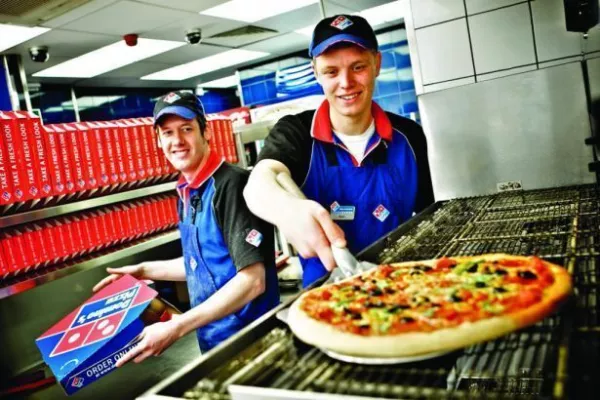Domino's Pizza last week posted a surprise drop in its quarterly same-store sales, as higher menu prices and delivery charges discouraged inflation-weary consumers from ordering at the restaurant.
The company's same-store sales in the United States fell 0.6% in the third quarter, compared with analysts' average estimate of a 0.14% rise, as per IBES data from LSEG.
Domino's Pizza on Thursday bet on a revival in US demand on the back of its spruced-up loyalty program and promotional offers to help offset ebbing benefits from higher menu prices.
Higher Delivery Charges
Shares of the global pizza giant climbed nearly 4% in early trade, reversing premarket losses after the company missed market expectations for third-quarter revenue, pinched by a tepid delivery business.
Higher delivery charges and several rounds of price hikes have discouraged inflation-weary consumers from ordering at the restaurant. In response, Domino's has offered promotions such as the 50% week-long online discount and the 'Emergency Pizza' program to gain traction.
The company in September also revamped its loyalty program, offering more redeemable points to members to improve order frequency. That has driven increased redemptions on the rewards program, the company said.
Menu Pricing
"I think just in general customers are looking for value ... We're trying to ... position the value more than just price," CEO Russell Weiner said on a post-earnings call.
The company said its delivery orders will see an improvement in the current quarter, while pricing benefits wane at a faster pace.
Domino's now expects average menu pricing to be slightly below 1% in the current quarter, compared with its earlier expectations of 2%.
'Set Up Well'
In a softer macro period, "consumers are going to find ways to (engage with restaurants) in a very value-oriented way. And it does not get much more value-centric than pizza, so I think Domino's is set up well," said Stephens analyst Joshua Long.
Domino's faced a setback from lower supply chain revenue from its franchised stores in the reported quarter. Pricing to these stores decreased 1.7%, compared with the year-ago numbers.
Still, the company's earnings per share of $4.18 handily beat analysts' estimate of $3.30, as per LSEG IBES data, while operating margins rose 190 basis points, benefiting from lower costs of commodities such as cheese.









